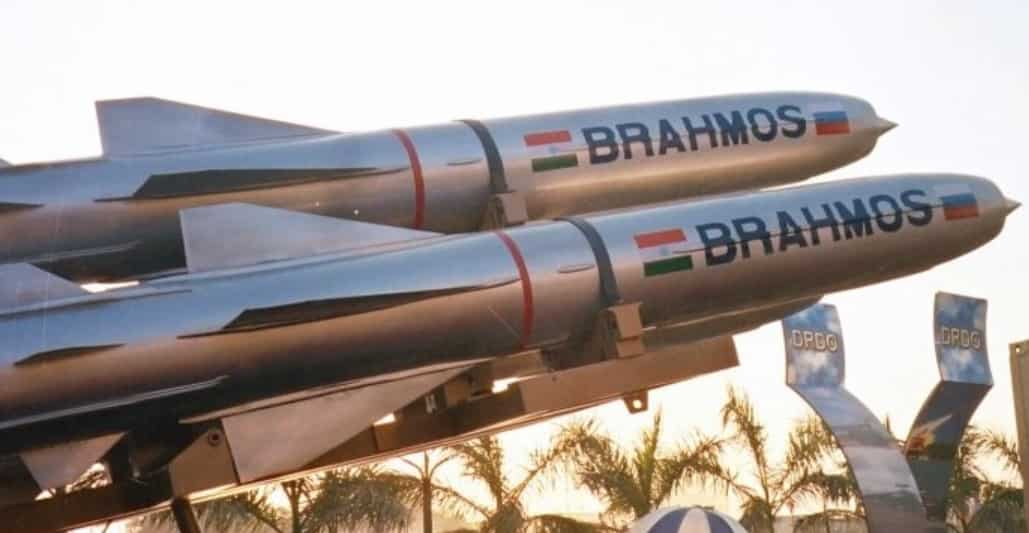India-Pak News: Defence Minister Rajnath Singh will virtually inaugurate a new BrahMos missile production facility in Lucknow today, Sunday, marking a big leap for India’s defence manufacturing sector. The unit, set up under the Uttar Pradesh Defence Industrial Corridor, is expected to roll out 80 to 100 BrahMos supersonic cruise missiles every year, according to IANS report.
This comes at a time when tensions with Pakistan have just begun to ease. For the first time in nearly a week, Kashmir valley witnessed a peaceful night, free from the roar of fighter jets, drones and missile fire.
Next-gen BrahMos missiles to boost India’s air power
Built at a cost of Rs 300 crore, the facility will also produce 100 to 150 next-generation BrahMos missiles annually. The upgraded variant is lighter—down from 2,900 kg to 1,290 kg—and boasts a longer strike range of over 300 km. Thanks to the weight reduction, aircraft like the Sukhoi can now carry up to three next-gen BrahMos missiles instead of just one.
Developed by BrahMos Aerospace, a joint venture between India’s DRDO and Russia’s NPO Mashinostroyeniya, the missile is known for its precision-strike capabilities and operates on a “fire and forget” system. The unit’s foundation stone was laid in 2021 and has been constructed on 80 hectares of land provided free by the Uttar Pradesh government.
Alongside the missile unit, the Defence Minister will also inaugurate the Aerospace Integration and Testing Facility and launch the Titanium and Super Alloys Materials Plant. A foundation stone will also be laid for a Defence Testing Infrastructure System (DTIS), aimed at becoming a hub for testing and certifying defence equipment.
The event will be attended by Uttar Pradesh Chief Minister Yogi Adityanath. The Defence Industrial Corridor spans six key nodes in the state—Lucknow, Kanpur, Aligarh, Agra, Jhansi, and Chitrakoot—and is positioned to turn Uttar Pradesh into a major defence manufacturing hub, second only to Tamil Nadu.
Valley breathes sigh of relief after India-Pakistan ceasefire
Meanwhile, in the Kashmir valley, a fragile calm has returned. For the first time in six days, there were no sounds of missiles, drones or aircraft through the night, offering a brief but welcome sense of normalcy.
“There was no ceasefire violation reported from any sector along the Line of Control in Kashmir after 11 pm on Saturday,” officials in Srinagar said, PTI reported.
Residents like Shahjahan Dar from Rawalpora expressed relief. “It has been a while since we slept peacefully. We are thankful to Almighty and everyone who helped end this war,” he said.
However, many who had fled their homes in border areas remain cautious. Abdul Aziz from Uri, for instance, said, “We saw drones and rockets even after the ceasefire was announced. We are hoping it lasts, but we’ll wait a few more days before going back.”
The ceasefire was agreed upon on Saturday evening after India and Pakistan’s Directors General of Military Operations (DGMOs) held talks. Foreign Secretary Vikram Misri confirmed that both sides have agreed to stop all hostilities—on land, air and sea—starting 5 pm Saturday.
The announcement came shortly after US President Donald Trump stated that the two countries had agreed to a “full and immediate ceasefire,” following mediation efforts by the US.
(With Inputs from agencies)
Anurag Dhole is a seasoned journalist and content writer with a passion for delivering timely, accurate, and engaging stories. With over 8 years of experience in digital media, she covers a wide range of topics—from breaking news and politics to business insights and cultural trends. Jane's writing style blends clarity with depth, aiming to inform and inspire readers in a fast-paced media landscape. When she’s not chasing stories, she’s likely reading investigative features or exploring local cafés for her next writing spot.






